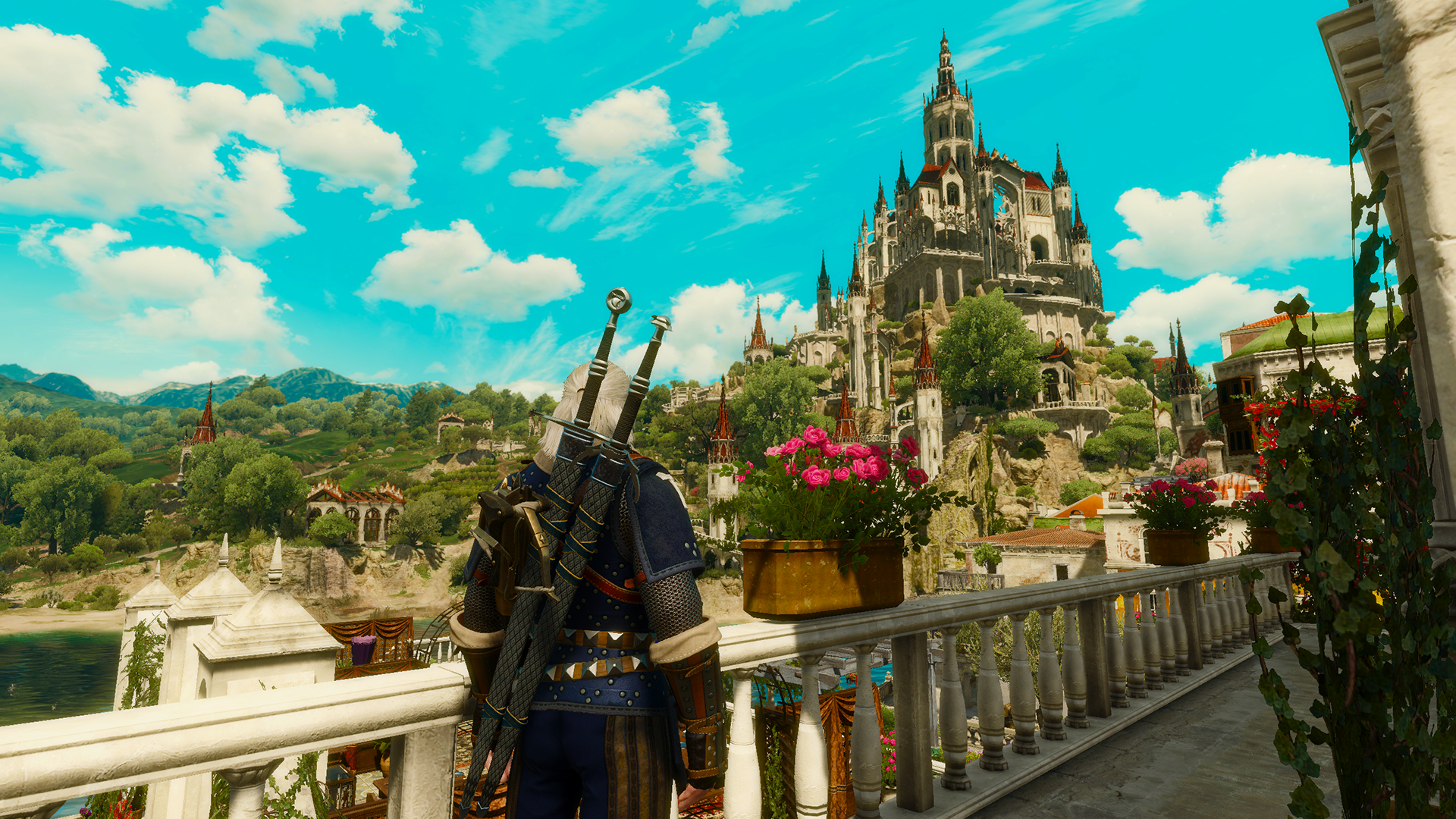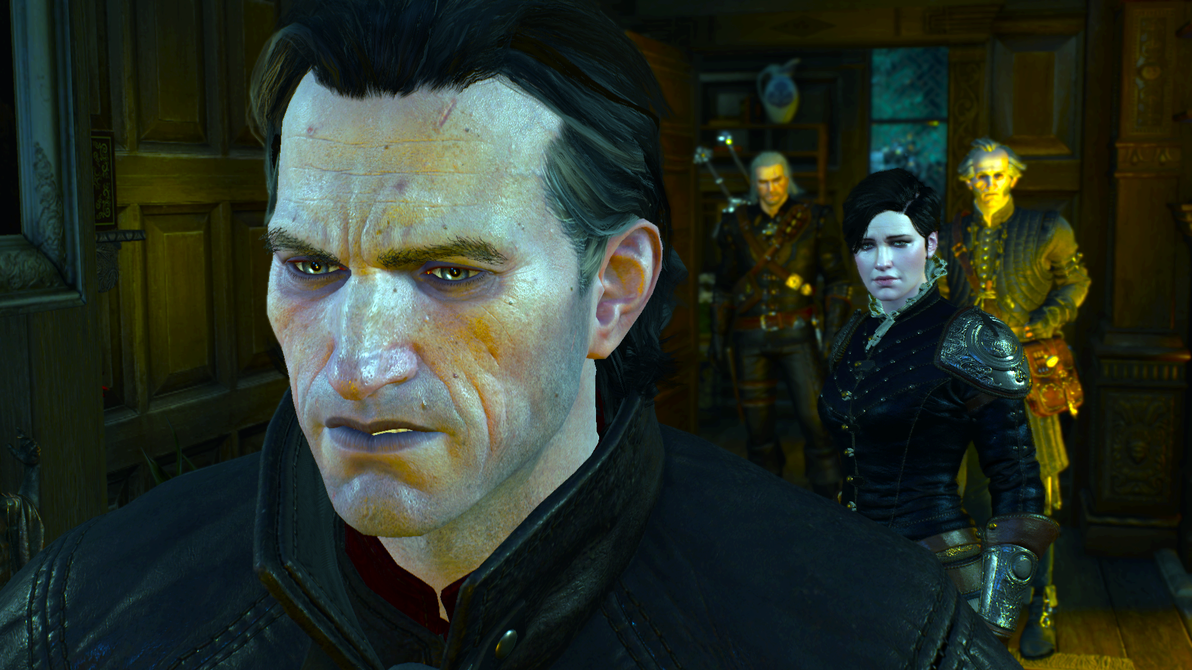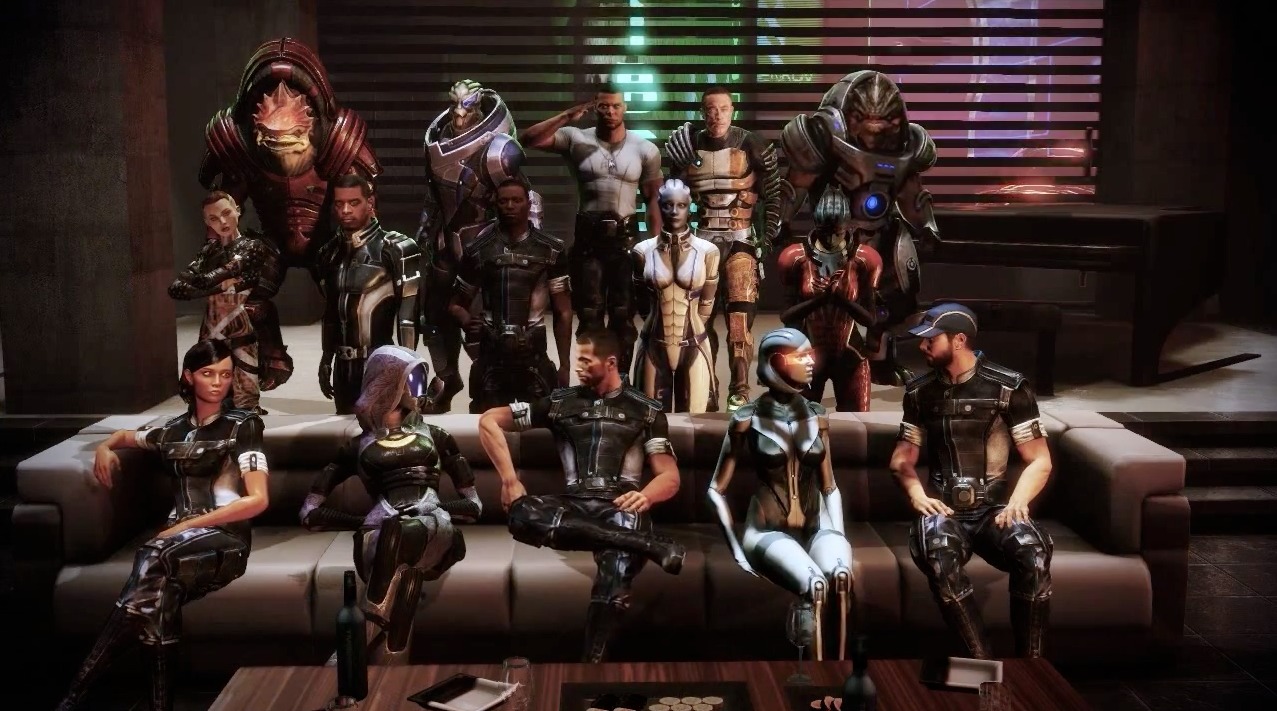Recently I finished the final parts of The Witcher 3: Wild
Hunt, specifically its two expansions; Hearts of Stone, released in 13th
October 2015 and Blood and Wine, which came out on the 31st of May
2016. I showed up late to the party but the two expansions still made their
mark; the most fitting review I can find for both Hearts of Stone and Blood and
Wine comes from Steam user TomWelcome: “Other developers make a DLC and call it a full game, CDPR makes a full game and calls it DLC”. Both expansions set the
standard in a games industry filled with rip-off DLC and poor value products.
Once again be warned; MAJOR SPOILERS are abound for both expansions. Complete them first if you haven't already and come back later.

Hearts of Stone has an outstanding and wholly original story
that takes a seemingly insignificant character from the opening of Wild Hunt
and places him in the centre of an emotional rollercoaster filled with
intrigue. Gaunter O’Dimm or “The Man of Mirrors” as he’s known is very much a
jester along the lines of Rumpelstiltskin, tempting individuals with deals and
pacts with often chilling strings attached. He tasks Geralt with fixing Olgierd
von Everic, a man who cannot die. He has many dark deeds to hide and where the
story succeeds the most is the way it gradually reveals more about this person,
through a chain of unique quests. Blending some down-time with a spot of humorous
ghost possession gave Shani the spotlight (another one of Geralt’s lovers
mentioned in places in the books) followed up by a full-blown heist that
reminded me of Grand Theft Auto 5’s heist missions with interchangeable recruits.
Both quests were entertaining in their own ways but it’s the final dive into a
painting that really places Hearts of Stone among some of the best DLC packages
of all time. It tells a heart-breaking story of how Olgierd, in his obsession
with control, threw away everything, including his lady love Iris by dabbling
in dark magic he should never have approached. It’s a very emotional cap-off to
an adventure in the land of the strange. Much like Velen’s Bloody Baron before
him, it is up to the player to decide whether Olgierd deserves forgiveness, a
second chance after all his foul dealings.

Hearts of Stone’s weakest aspects show through the way it
takes place in similar settings in and around the town of Oxenfurt. High-level
enemies such as the disgusting Arachnomorphs can only get you so far when you’re
fighting them in the same areas you played through in the main game. New
gameplay facets are also limited, with HOS placing this task into the hands of
a travelling Ofieri merchant who can enchant Geralt’s gear with runes. Aside
from Olgierd’s house (which inevitably gets burned to the ground), much of the
game takes place in familiar territory. Other than that, the expansion nears
perfection.

Blood and Wine on the other hand, may have a more
straightforward story but it adds a ton of things to do and plenty of creative
gameplay scenarios all placed against a more humorous, light-hearted tone. It’s
meant to be played last and it really shows throughout. Most of the expansion’s
origins can be traced to Andrej Sapkowski’s seventh and final book in The
Witcher saga, “Lady of the Lake”. In it, Geralt and his company (Which includes
the noble vampire Regis) stop off in Toussaint for a time, with the white
haired Witcher taking on a monster contract here and there. With Regis being
one of my favourite side characters from the books, it was a real treat to take
in all the little references. What makes the only good vampire in the series so
engaging is his similarities with Geralt; both men have returned from the dead
and both exist somewhere in-between ordinary humans and feral monsters, making
them shunned by the people around them. Just exploring the expansive fields was
also a pleasure; much like the original game I found myself stopping just to
gaze at the surrounding landscape; in keeping with its lighter tone, the Duchy
of Toussaint looks absolutely gorgeous, bursting with colour everywhere you
look. This also shows through the quest design; between taking a bard on an
investigation, singing and composing a ballad along the way and finding the
location of a statue’s missing “assets”, there’s plenty of lively humorous fun
to be had with the Blood and Wine quests. Yet this also gives way to irony as
this idyllic paradise is often shattered by the appearance of some of the most
disgusting creatures in the game; giant centipedes, toxic killer plants,
hulking vampires and crawling Kikimores boasting some of the deadliest attacks
in the game.

Then there’s Detlaff, a formidable final boss (should you choose
to face him) with three separate forms; I ended up dying to him more times than
anywhere else in Wild Hunt. It’s one hell of a way to make the player put all
their skills together. Wrapping up the story with three different endings and a
final word with Regis wound things down perfectly, right down to the smile that
Geralt gives towards the screen. It’s as if the developer is pointing directly
at the player saying thank you; for sticking with the series and supporting
them in all the demanding work they’ve done.
The only major weakness of Blood and Wine for me comes right
at the very end; “Be it ever so humble” is a fine farewell but it does have
some missed potential. Upon returning to his vineyard, Corvo Bianco, Geralt
finds an unexpected visitor; depending on your choices this could be Yennefer,
Triss, Dandelion or Ciri. It’s too bad the expansion didn’t bring all of these
characters together for one last gathering alongside the likes of Zoltan,
Priscilla, Roche, Ves, Eskel and Lambert.

Surprisingly it’s Bioware of all developers who manages to
outdo CD Projekt here. Back in 2013, the Canadian company rounded off Mass
Effect 3 with the Citadel DLC; easily the best content pack of the bunch, it
brings together all the characters the player has gotten to know over the
trilogy for a round of tongue-in-cheek action and comedy, not to mention
throwing a massive party to create a poignant send-off to Commander Shepherd
before the galaxy-spanning crew heads off to tear the Reapers a new one. CDPR
could have taken some inspiration here and given the entire cast a full
closure. As it stands though, I’m still happy with Geralt settling down with
Yennefer for the rest of his days.
After pouring in just under 60 hours into both expansions (On
top of 60 for the main game) do I have a favourite? Not at all; both are so
well done and have their own individual strengths that quickly overcome any of
their shortcomings. All in all, it felt a little emotional to make it to the
end of a game so lovingly crafted; it’s something I haven’t really felt since
getting to the end of Naughty Dog’s The Last of Us. I’m anxious to see what CD
Projekt Red has planned for CyberPunk 2077; if it’s anywhere near as polished
as The Witcher 3 then I can hardly wait.
(Images used for the purposes of review and criticism under fair use)


No comments:
Post a Comment
Note: only a member of this blog may post a comment.